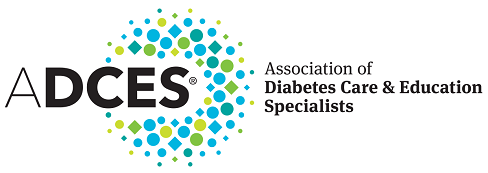
Diabetes Care & Education Journals for Members
Gain professional knowledge from publications that showcase the art, heart and science of diabetes care and education.
Diabetes Practice Journals

Member-Only Diabetes Care and Education Journals
A benefit of ADCES® membership, we produce diabetes practice journals that inform, educate and inspire. Read on to learn more about our informative, progressive journals and how you can submit your own articles.
.png?sfvrsn=e256259_2)
The Science of Diabetes Self-Management and Care
The Science of Diabetes Self-Management and Care, formerly called The Diabetes Educator, is our bi-monthly diabetes care and education journal that serves as the official research publication of ADCES. It publishes papers on aspects of patient education; professional education; population, cardiometabolic and public health; and technology-based needs while serving as a reference for the art and science of DSMES. The editorial board is headed by Editor-in-Chief James Fain, PhD, RN, BC-ADM, FADCES, FAAN.
More Information About The Science of Diabetes Self-Management and Care
Issue Distribution & Manuscript Submissions
Full issues of The Science of Diabetes Self-Management and Care journal are emailed to ADCES members every other month, but individual articles are posted online first as soon as they are ready. (Issues between 1975 and 2020 were named The Diabetes Educator journal.)
Guidelines for submitting manuscripts follow standard submission practices, which can be found on the journal page by clicking the link below.
.png?sfvrsn=29256259_2)
ADCES in Practice
More Information About ADCES in Practice
Issue Distribution & Manuscript Submissions
Full issues of ADCES in Practice are mailed to ADCES members every other month, but individual articles are posted online first as soon as they are ready.
Author guidelines for submitting manuscripts can be found on the journal page by clicking the link below. For answers to commonly asked manuscript preparation and submission requirement questions, view the details in the next section.
Author Guidelines for ADCES in Practice
We encourage you to share your stories, successes and lessons learned. The lived experiences of diabetes care and education specialists are the backbone of ADCES in Practice and make it the valued publication it is today.
We’ve provided answers to some of the most commonly asked questions about preparing your articles below. Before submission, please review the guidelines to ensure your article is prepared correctly.
● Use subheadings to organize content and guide readers through your article.
● Number figures and tables consecutively in the order they appear (e.g., Figure 1, Figure 2, Table 1, Table 2, etc.), and indicate their location in the text.
● Use numerical annotations to cite references. Alternatively, you may add narrative mentions, for example:
- According to an article by researchers at Harvard Medical School…
- The study, led by researchers from the Centers for Disease Control and Prevention…
- In a 2006 US Endocrine Disease report, “Investigating Inhaled Insulin,” Virginia Zamudio says...
● List cited references at the end of your article: 10 or fewer preferred.
At minimum, a complete manuscript includes two files: 1) title page and 2) main document. If you have figures and tables, you must submit them as separate files.
● Article title
● Author names and credentials exactly as you want them to appear in print
● Author affiliations including city and state
● Complete mailing address, email and daytime telephone for corresponding author
● Article keywords
● Body of article
● Reference list (see Reference List Preparation below)
● Acknowledgments, if any
● Accepted file formats include JPG, TIF, EPS, Word or PowerPoint
● Images must be at least 300 dpi (dots per inch)
Reference List Preparation
As an author, you’re responsible for the accuracy and completeness of the reference list. Please follow the reference type and formatting examples below.
We look forward to receiving your submission.
Journal Article
Crews DW, Gartska WR, Meyer B, et al. The physiology of the garter snake: An analysis. Sci Am. 1981;245:158-159.
Online
Blackburn TA. Updating autologous chondrocyte implantation knee rehabilitation. [serial online]. 2003;5:30-33. http://www.orthopedictechreview.com/issues/julaug03/pg30.htm. Accessed January 7, 2005.
Book
Voet D, Voet JG. The Science of Biochemistry. 3rd ed. New York, NY: J Wiley; 1990.
Book Chapter
Kuret JA, Murad F. Adenohypophyseal hormones. In: Gilman AG, Taylor P, eds. The Pharmacological Basis of Therapeutics. 8th ed. Orlando, Fla: Grune & Stratton; 1976: 1334-1360.
Conference Paper or Poster
Eisenberg J. Market forces and physician workforce reform: why they may not work. Paper presented at: Annual Meeting of the Association of American Medical Colleges; October 28, 1995; Washington, DC.


